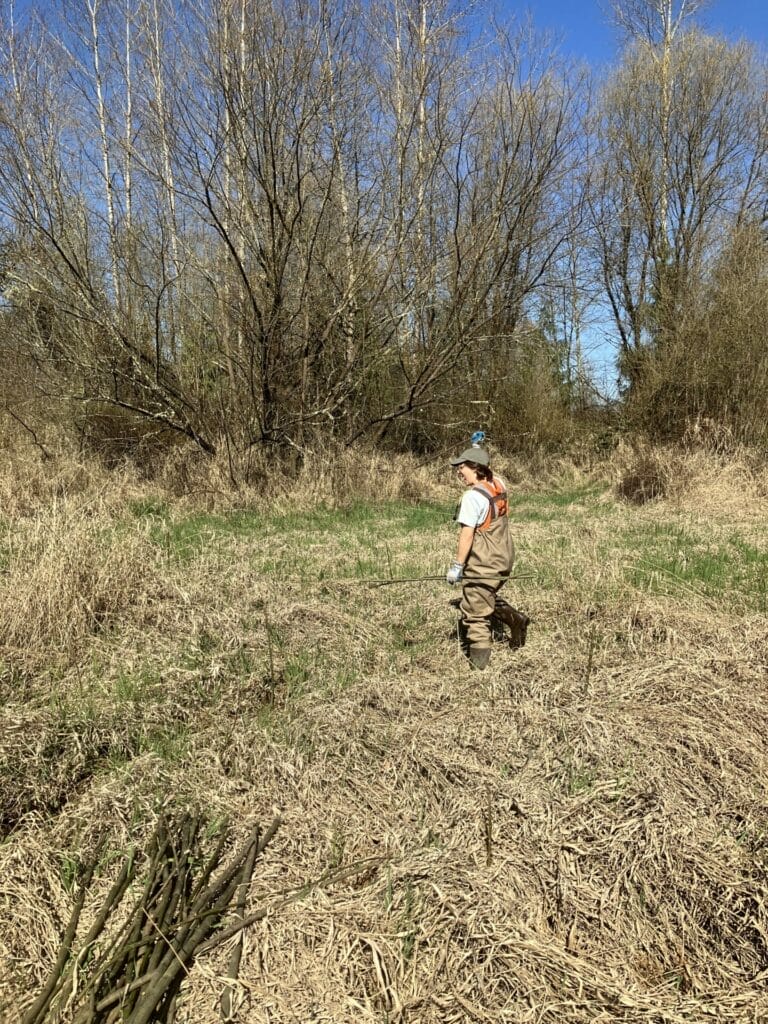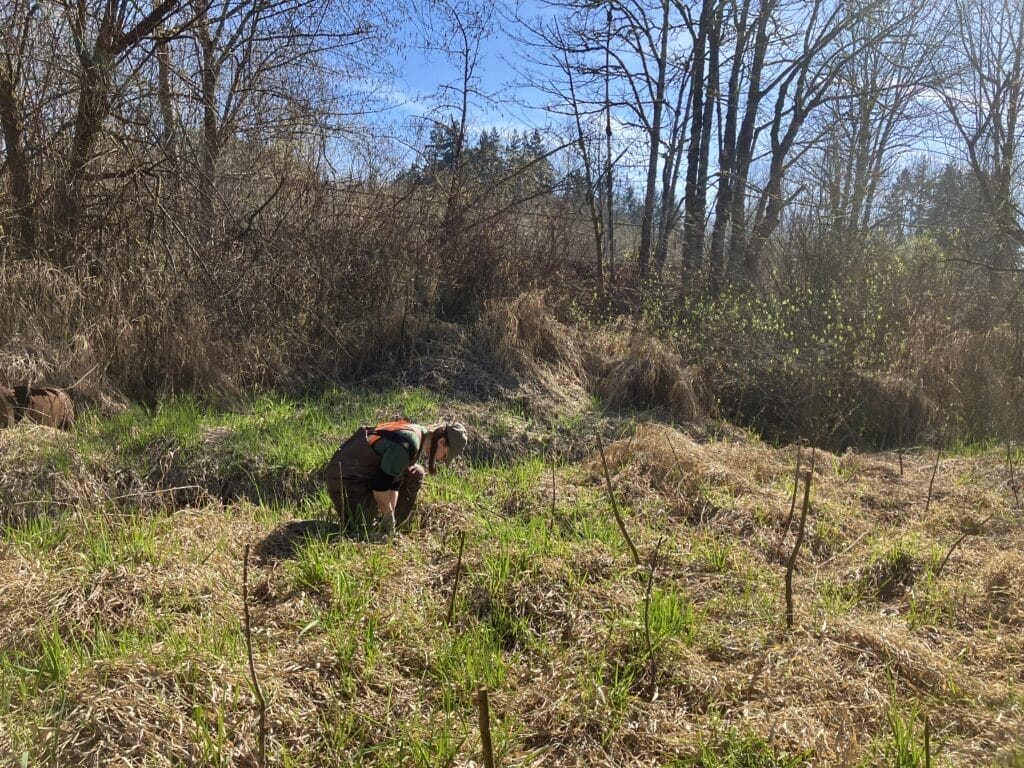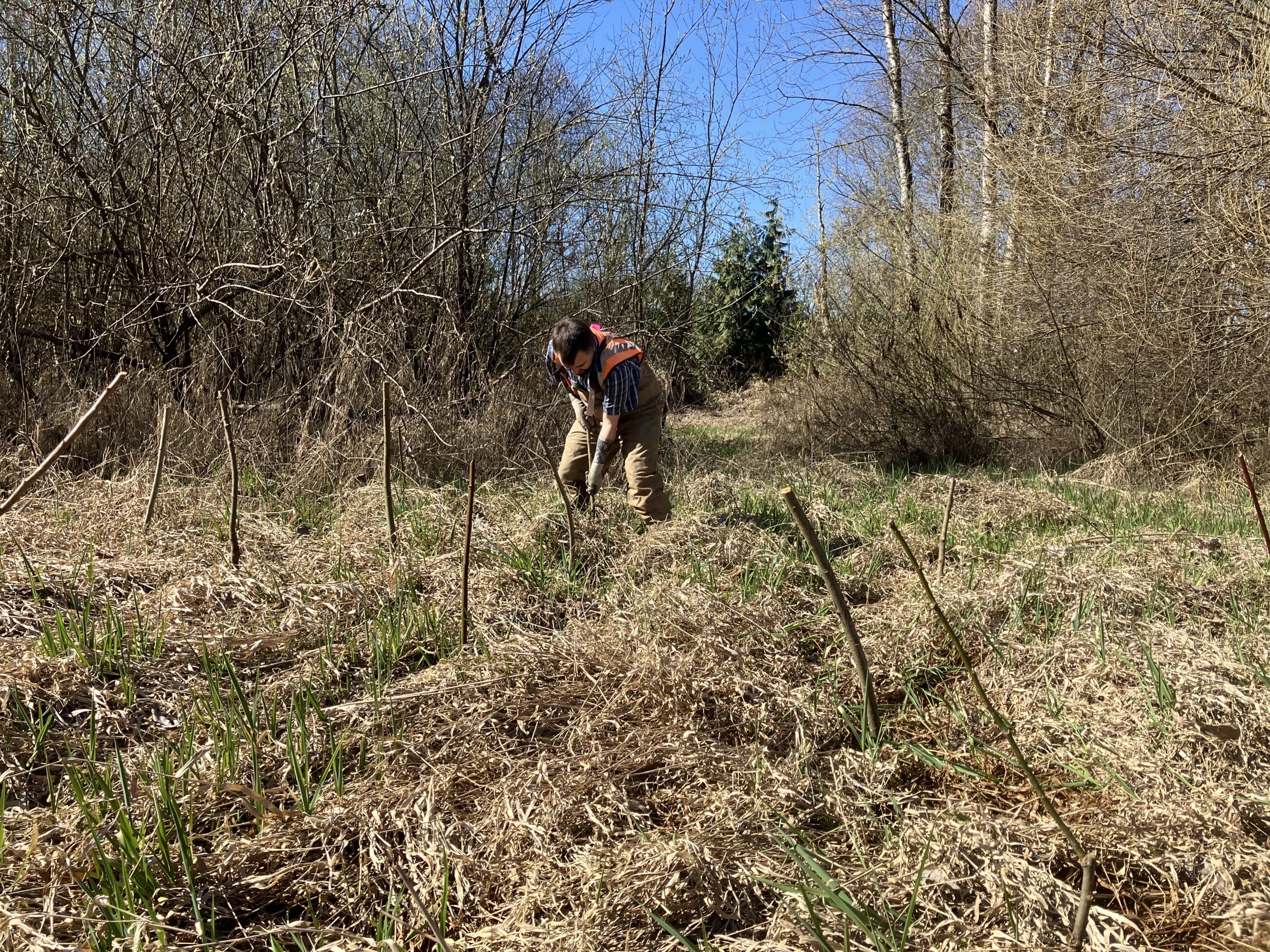Using Tree Cuttings to Restore Coe-Clemmons Creek
Within wetlands that sit east of the Snoqualmie River lies a riparian corridor with salamanders and juvenile salmon that call Coe-Clemmons Creek home, this is a place that is set to be revitalized with tree cuttings. This unique habitat connects to the Snoqualmie/South Fork Skykomish River Basin where salmon navigate to spawn and support an ecosystem that connects humans with flora and fauna within the Snoqualmie Valley. Located just south of downtown Duvall, Coe-Clemmons Creek is a canopy-dense riparian area in recovery from past logging and development, and ongoing runoff from local agriculture. It’s part of an important watershed that enters the Snoqualmie River floodplain and provides surrounding areas with flood control and carbon sequestration.

Restoration practices being implemented at Coe-Clemmons Creek has become an integral part of the remediation process for critical salmon habitats that have dealt with the impacts of climate change, the introduction of non-native species, as well as human activities that cause polluted runoff to enter these waterways. Since 2023, The Greenway Trust has been working with the City of Duvall to improve the riverbanks and fix the natural flow of water and sediment in Coe-Clemmons Creek. This initiative is not just about planting trees; it’s a comprehensive approach to reviving an ecosystem. This work is being done as part of Duvall’s Coe-Clemmons Fish Habitat Restoration Plan and is more than 20 years in the making.
Creating a Canopy of Change
The Greenway Trust is currently working to restore an area that is about five acres large and is dominated by invasive reed canarygrass. This riparian buffer is set to witness the growth of nearly 10,000 native trees and shrubs when the project is complete. These plants will form a verdant buffer along the creek in a wetland, which will eventually grow to shade out reed canarygrass that cover an area up to 200 feet away from the creek. The goal is simple yet profound: to foster a thriving habitat that supports wildlife and combats water quality issues.
Using Tree Cuttings to Plant an Ecosystem
To meet the challenges posed by a wet environment, the Greenway Trust’s method of choice for restoration is the use of live stakes—cuttings from deciduous trees like cottonwood, Pacific willow, Sitka willow, hooker’s willow, and redosier dogwood. These cuttings are sourced from various nurseries. This method of restoration is a common practice that gives conservationists a cost-effective way to restore riparian habitats where erosion has caused steep banks along a stream. That’s because live stakes grow quickly and shade out weeds faster than potted tree saplings. They do especially well in saturated soils and along stream banks where they quickly grow both above and belowground to help shade out weeds like reed canarygrass and prevent erosion. Once placed into the ground by the Greenway Trust Restoration Crew, they become the building blocks of a new riparian landscape. Planted densely, they promise to establish a canopy that reduces pollution in streams, provides additional flood storage, increases sources of cool water to the Snoqualmie River, and provides refuge for local fauna while creating a foundation for native plants to naturally reseed. In March of 2023, the Greenway Trust Restoration Crew planted a first round of 3,570 stakes that have already begun to root and branch. Once staking is completed in 2025, the Greenway Trust will continue to monitor the buds to ensure they create new growth.

The Path Ahead
This project is more than a restoration effort; it’s a beacon of hope for surrounding ecological communities dealing with the impacts of climate change, flooding and pollution. The positive impacts of this project will create areas for more diverse habitats for different species like salamanders, birds, and salmon. The live stakes will grow into trees that will help filter out pollutants from runoff that get into the water, including intercepting rainfall that would become flood waters. Once the riparian buffer is established, fallen trees will provide juvenile coho salmon with areas to rest, boosting their chance of survival. These future trees will lower the temperature of the water in the wetland while also contributing to carbon sequestration. The self-sustaining nature of this plan is its most remarkable feature, with the city’s native plantings expected to migrate and reseed within the wetland as the trees naturally fall over time.
If you would like to learn more about habitat restoration and become part of the solution, visit this page to sign up for an upcoming volunteer event!





